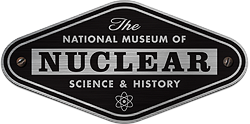Paul A. Henry was a scientist who worked on pigmentation and paints during World War II. Born in June 13, 1912 in Greenpoint, Brooklyn, New York, he attended the Pratt Institute and the Brooklyn Polytechnic Institute. He began working at Interchemical Corporation in 1937. During World War II the Office of Scientific Research and Development (OSRD) took over the company and it became a contractor for the National Defense Research Committee’s (NDRC) Camouflage Section.[i]
The NDRC tasked Interchemical Corp. to “develop noncritical substitutes, improve and simplify procedure in field practice, and develop and construct such special apparatus…for use in camouflage field studies.”[ii] Eventually, the company developed the Black Widow finish that provided aircrafts protection of searchlights at night. [iii] Henry specifically, along with two other colleagues, oversaw chemical projects “involving pigments, enamels, and lacquers.”[iv] He also published an article called “Phosphorescent Pigments and Paints,” in which he described the uses, characteristics, and limitation of phosphorescent (non-radioactive, glow-in-the-dark) pigments in the summer of 1942. Henry’s and Interchemical Corp.’s work eventually led to the Northrop P–61 Black Widow’s “‘stealth’ camouflaged shiny black paint.”[v]
Additionally, Interchemical Corp. was involved with finding “suitable barrier fabrication” for the gaseous diffusion process for enriching uranium.[vi]
For his work, Henry received an official certificate from the OSRD that was signed by James Conant and Vannevar Bush “in appreciation of effective service.”
Information contributed by Robert Tyndall.
[i] “VISIBILITY STUDIES AND SOME7 – APPLICATIONS IN THE FIELD OF CAMOUFLAGE” (UNCLASSIFIED AD 221 102 DEFENSE DOCUMENTATION CENTER SCIENTIFIC AND TECHNICAL INFORMATION, Washington, DC, 1946, https://apps.dtic.mil/dtic/tr/fulltext/u2/221102.pdf), 11.
[ii] Ibid., 223
[iii] Ibid., 6
[iv] DEFENSE DOCUMENTATION CENTER SCIENTIFIC AND TECHNICAL INFORMATION, 7
[v] Stephen L. McFarland, “Conquering the Night Army Air Forces Night Fighters at War,” Air Force History and Museums Program, (1997), https://media.defense.gov/2010/May/26/2001330259/-1/-1/0/AFD-100526-018.pdf, 12.
[vi] Vincent C. Jones, MANHATTAN: THE ARMY AND THE ATOMIC BOMB (Washington, DC: CENTER OF MILITARY HISTORY UNITED STATES ARMY, 1985, http://large.stanford.edu/courses/2016/ph241/xu1/docs/jones.pdf), 151.




